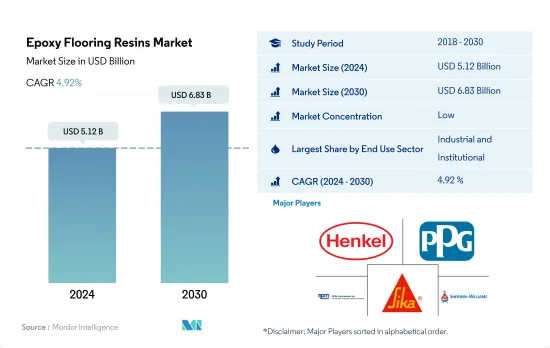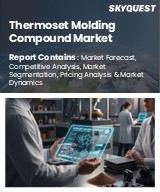
|
시장보고서
상품코드
1684063
에폭시 바닥용 수지 시장 : 시장 점유율 분석, 산업 동향 및 통계, 성장 예측(2025-2030년)Epoxy Flooring Resins - Market Share Analysis, Industry Trends & Statistics, Growth Forecasts (2025 - 2030) |
||||||
에폭시 바닥용 수지 시장 규모는 2024년에 51억 2,000만 달러로 평가되었고, 2030년에는 68억 3,000만 달러에 이를 전망이며, 예측 기간인 2024-2030년 CAGR 4.92%로 성장할 것으로 예측됩니다.

쇼핑몰, 센터 및 사무실 수요 증가가 에폭시 바닥용 수지 수요를 견인할 것 같습니다.
- 세계의 에폭시 바닥용 수지 소비액은 2022년에 2.67%의 성장을 기록했지만, 이것은 산업, 시설 및 상업 건축 분야로부터 수요 증가가 견인하고 있습니다. 2023년에 에폭시 바닥용 수지는 세계 바닥용 수지 시장의 52%를 차지한 것으로 평가되었습니다.
- 에폭시 바닥용 수지의 소비는 산업 및 시설 부문이 지배적이며, 2022년에는 92.04%의 큰 점유율을 차지했습니다. 세계적으로 산업용 바닥 면적은 2023년에 3.09% 증가한 것으로 평가되며, 이는 주로 창고 공간의 확대가 요인이 되고 있습니다. 특히 인도의 공업 및 창고 분야에서는 2023년 상반기에 흡수 면적이 7% 증가했으며 2022년 상반기에 비해 2,240만 평방피트가 되었습니다. 미국에서는 2026년까지 새로운 공업용 건물에 475억 9,000만 달러가 투입될 것으로 예측되는 바와 같이 공업용 건설에 대한 투자가 활발해지고 있으며, 에폭시 바닥용 수지 수요가 높아질 것으로 예상됩니다. 그 결과 2023년에 비해 2030년까지 17억 5,000만 달러가 급증할 것으로 예상됩니다.
- 상업 분야는 에폭시 바닥재용 수지의 가장 급성장하고 있는 소비자가 될 것으로 예측되며, 예측 기간 중의 CAGR은 7.22%로 현저합니다. 상업 부문의 세계 신규 바닥 면적은 주로 쇼핑몰, 사무실 공간 및 기타 상업 시설 수요 급증으로 2030년까지 93억 4,000만 평방피트에 이를 것으로 예상됩니다. 예를 들어, 상위 7개 도시에서 인도의 등급 A 오피스 시장은 2026년까지 약 10억 평방피트로 확대될 전망이며, 2030년까지 12억 평방피트로 확대될 것으로 예상됩니다. 그 결과, 상업 부문에서 세계의 에폭시 수지 소비량은 2023년 2억 4,300만 달러에서 2030년에는 3억 9,700만 달러로 증가할 것으로 추정됩니다.
소매 공간 증가가 에폭시 수지 수요를 견인할 것으로 예상됩니다.
- 세계의 에폭시 바닥용 수지 시장은 2022년에 약 2.67%의 성장을 이루었고, 2021년의 숫자를 웃돌았습니다. 특히 아시아태평양 및 유럽이 주요 지역으로 부상하여 각각 36.24%와 32.12%의 점유율을 획득했습니다. 세계의 에폭시 바닥용 수지 시장은 2023년에는 4.34% 확대해 전년 성장률을 상회할 것으로 예측됩니다.
- 2023년에는 아시아태평양이 에폭시 바닥용 수지의 압도적인 소비자로서의 지위를 굳혀 세계 시장의 추정 36.15%를 차지했습니다. 이 수요의 급증은 공업, 헬스케어, 소매 등의 분야에 대한 투자를 원동력으로 하는 이 지역의 건설 활동의 활성화에 기인하고 있습니다. 예를 들어 인도네시아에서는 2025년까지 29만 2,000제곱미터에 달하는 6개의 쇼핑몰 프로젝트가 완성될 예정입니다. 이러한 기세를 감안하면 아시아태평양의 에폭시 바닥용 수지 시장은 2023년 수준에 비해 2030년까지 40.21%라는 대폭적인 성장이 예상됩니다.
- 아시아태평양은 소비에 선도하고 있으며 예측 기간 동안 5.62%라는 최고의 CAGR을 나타낼 것으로 예측되고 있습니다. 이러한 성장은 특히 산업, 시설 및 상업 분야에서 에폭시 바닥용 수지에 대한 수요가 급증하고 있기 때문입니다. 특히, 이 지역의 공업 및 시설 바닥 면적은 2023년부터 2024년까지 1억 4,900만 평방피트 확대할 것으로 보여지고 있습니다. 인도에서는 델리 NCR, 방갈로르, 하이데라바드 등 주요 도시에서 2023년부터 2025년까지 총 2,325만 평방피트의 소매 면적을 자랑하는 60개 가까이의 쇼핑몰이 오픈할 것으로 예상됩니다. 이러한 동향은 이 지역 에폭시 바닥재용 수지 시장이 견조한 궤도를 묘사하고 있는 것을 나타내고 있으며, 2023년의 17억 6,000만 달러에서 2030년에는 25억 8,000만 달러에 달할 것으로 예측되고 있습니다.
세계의 에폭시 바닥재용 수지 시장 동향
아시아태평양의 대규모 오피스 빌딩 건설 프로젝트의 급증으로 세계 상업 건축 전용 바닥 면적이 증가합니다.
- 2022년 세계의 상업 건축용 바닥 면적은 전년 대비 0.15%의 소폭 성장이 되었습니다. 유럽은 2030년 이산화탄소 배출 목표에 맞추어 에너지 효율적인 오피스 빌딩을 추진하는 움직임이 원동력이 되고 있습니다. 직원의 사무실 복귀에 따라 유럽 기업은 임대 계약을 재개하고 2022년에는 450만 평방피트의 신규 오피스 건설에 박차를 가했습니다. 이 기세는 2023년에도 계속되어 세계 성장률은 4.26%로 평가되었습니다.
- COVID-19의 유행은 노동력과 자재 부족을 일으켜 상업시설 건설 프로젝트의 취소와 지연을 초래했습니다. 그러나 폐쇄가 완화되고 건설활동이 재개됨에 따라 2021년 세계 상업 시설의 신규 바닥 면적은 11.11% 급증하였고 아시아태평양이 20.98%의 성장률로 선도했습니다.
- 향후 세계 상업 시설의 신규 바닥 면적의 CAGR은 4.56%로 될 전망입니다. 아시아태평양의 CAGR은 5.16%로 예측되며 다른 지역을 능가할 것으로 예상됩니다. 이 성장의 원동력이 되고 있는 것은 중국, 인도, 한국, 일본에 있어서 상업 시설 건설 프로젝트의 활성화입니다. 특히 베이징, 상하이, 홍콩, 타이베이 등 중국의 주요 도시에서는 A급 사무실 공간 건설이 가속화되고 있습니다. 또한 인도에서는 2023년부터 2025년까지 상위 7개 도시에서 약 2,325만 평방 피트에 이르는 약 60개의 쇼핑몰이 오픈할 예정입니다. 아시아태평양 전역의 이러한 노력을 합산하면 2030년까지 상업 시설의 신규 바닥 면적은 2022년 대비 15억 6,000만 평방피트 증가할 것으로 예상됩니다.
세계의 주택 부문을 뒷받침하는 저렴한 주택 계획에 대한 정부 투자 증가로 남미 주택 건설이 가장 빠르게 성장할 것으로 추정됩니다.
- 2022년 세계 주택 건축의 신규 바닥 면적은 2021년 대비 약 2억 8,900만 평방피트 감소했습니다. 이는 토지 부족, 노동력 부족, 건축자재 가격의 지속 불가능한 급등으로 인한 주택 위기 때문입니다. 이 위기는 아시아태평양에 심각한 영향을 미쳤으며, 2022년 신규 바닥 면적은 2021년 대비 5.39% 감소했습니다. 그러나 2023년에는 2030년까지 30억 명을 수용할 수 있는 저렴한 주택을 새로 건설하기 위한 자금을 조달할 수 있는 정부 투자로 세계 신규 바닥 면적은 2022년 대비 3.31% 증가할 것으로 예측되어 보다 밝은 전망이 기대됩니다.
- COVID-19의 유행은 경기 감속을 일으켜, 그 때문에 많은 주택 건설 프로젝트가 중지 또는 연기되어 2020년 세계 신규 바닥 면적은 2019년에 비해 4.79% 감소했습니다. 2021년에 규제가 해제되어 주택 프로젝트에 대한 침체된 수요가 해방되면서 신규 바닥 면적은 2020년 대비 11.22% 증가했고, 유럽이 18.28%로 가장 높은 성장세를 보였으며, 남미가 2021년에 2020년 대비 17.36% 증가했습니다.
- 세계의 주택용 신규 바닥 면적은 예측 기간 동안 CAGR 3.81%로 성장을 지속하고, 남미가 가장 빠른 CAGR 4.05%로 발전할 것으로 예측됩니다. 2023년에 발표된 브라질의 Minha Casa Minha Vida와 같은 계획 및 이니셔티브는 여러 규제 변경과 함께 발표되었으며, 정부는 저소득 가구에 저렴한 주택 단위를 제공하기 위해 19억 8,000만 달러의 투자를 계획하고 있습니다.
에폭시 바닥용 수지 산업의 개요
에폭시 바닥용 수지 시장은 세분화되어 있어 주요 5개사에서 32.44%를 차지하고 있습니다. 이 시장 주요 기업은 다음과 같습니다. Henkel AG & Co. KGaA, PPG Industries, Inc., RPM International Inc., Sika AG 및 The Sherwin-Williams Company(알파벳순 정렬).
기타 혜택
- 엑셀 형식 시장 예측(ME) 시트
- 3개월의 애널리스트 서포트
목차
제1장 주요 요약 및 주요 조사 결과
제2장 보고서 제안
제3장 서문
- 조사 전제조건 및 시장 정의
- 조사 범위
- 조사 방법
제4장 주요 산업 동향
- 최종 용도 분야의 동향
- 상업
- 산업 및 시설
- 인프라
- 주택
- 주요 인프라 프로젝트(현재 및 발표됨)
- 규제 프레임워크
- 밸류체인 및 유통채널 분석
제5장 시장 세분화
- 최종 용도 분야별
- 상업
- 산업 및 시설
- 인프라
- 주택
- 지역별
- 아시아태평양
- 국가별
- 호주
- 중국
- 인도
- 인도네시아
- 일본
- 말레이시아
- 한국
- 태국
- 베트남
- 기타 아시아태평양
- 유럽
- 국가별
- 프랑스
- 독일
- 이탈리아
- 러시아
- 스페인
- 영국
- 기타 유럽
- 중동 및 아프리카
- 국가별
- 사우디아라비아
- 아랍에미리트(UAE)
- 기타 중동 및 아프리카
- 북미
- 국가별
- 캐나다
- 멕시코
- 미국
- 남미
- 국가별
- 아르헨티나
- 브라질
- 기타 남미
- 아시아태평양
제6장 경쟁 구도
- 주요 전략 동향
- 시장 점유율 분석
- 기업 상황
- 기업 프로파일
- Akzo Nobel NV
- Henkel AG & Co. KGaA
- Kansai Paint Co.,Ltd.
- KCC Corporation
- MBCC Group
- Nippon Paint Holdings Co., Ltd.
- PPG Industries, Inc.
- RPM International Inc.
- Sika AG
- The Sherwin-Williams Company
제7장 CEO에 대한 주요 전략적 질문
제8장 부록
- 세계 개요
- 개요
- Porter's Five Forces 분석 프레임워크(산업 매력도 분석)
- 세계 밸류체인 분석
- 시장 역학(DROs)
- 정보원 및 참고문헌
- 도표 일람
- 주요 인사이트
- 데이터 팩
- 용어집
The Epoxy Flooring Resins Market size is estimated at 5.12 billion USD in 2024, and is expected to reach 6.83 billion USD by 2030, growing at a CAGR of 4.92% during the forecast period (2024-2030).

The rising demand for shopping malls & centers and offices is likely to drive the demand for epoxy flooring resins
- The global consumption value of epoxy flooring resins witnessed a 2.67% growth in 2022, driven by rising demand from the industrial & institutional and commercial construction sectors. In 2023, epoxy flooring resins are projected to capture 52% of the global flooring resins market.
- The industrial & institutional sector dominated the consumption of epoxy flooring resins, accounting for a significant 92.04% share in 2022. Globally, the new industrial floor area was expected to grow by 3.09% in 2023, primarily fueled by expanding warehousing spaces. Notably, the Indian industrial and warehousing sector saw a 7% rise in absorption, totaling 22.4 million sq. ft in H1 2023 compared to H1 2022. Heightened investments in industrial construction, like the projected USD 47.59 billion spending on new industrial buildings in the United States by 2026, are expected to bolster the demand for epoxy flooring resins. Consequently, the sector's consumption of epoxy flooring resins globally is projected to surge by USD 1.75 billion by 2030 compared to 2023.
- The commercial sector is projected to be the fastest-growing consumer of epoxy flooring resins, with a notable CAGR of 7.22% during the forecast period. The global new floor construction in the commercial sector is projected to reach 9.34 billion sq. ft by 2030, primarily driven by the surging demand for shopping malls, office spaces, and other commercial establishments. For instance, India's Grade A office market in the top seven cities is anticipated to expand to approximately 1 billion sq. ft by 2026, further scaling up to 1.2 billion sq. ft by 2030. Consequently, the global consumption of epoxy flooring resins in the commercial sector is estimated to increase from USD 243 million in 2023 to USD 397 million in 2030.
The rise in retail spaces is expected to drive the demand for epoxy flooring resins
- The global epoxy flooring resins market witnessed a growth of approximately 2.67% in 2022, surpassing the figures of 2021. Notably, Asia-Pacific and Europe emerged as the leading regions, capturing shares of 36.24% and 32.12%, respectively. The global epoxy flooring resins market was projected to expand by 4.34% in 2023, building on the growth of the previous year.
- In 2023, Asia-Pacific solidified its position as the dominant consumer of epoxy flooring resins, accounting for an estimated 36.15% of the global market. This surge in demand can be attributed to the region's escalating construction activities, driven by investments in sectors like industrial, healthcare, and retail. For instance, Indonesia is set to witness the completion of six shopping mall projects, collectively spanning 292 thousand sq. m, by 2025. Given this momentum, the epoxy flooring resins market in Asia-Pacific is poised to grow by a significant 40.21% by 2030 compared to its 2023 levels.
- Asia-Pacific is leading in consumption and is also projected to exhibit the highest CAGR of 5.62% during the forecast period. This growth is likely to be fueled by the region's surging demand for epoxy flooring resins, particularly in the industrial, institutional, and commercial sectors. Notably, the industrial and institutional floor area in the region is set to expand by 149 million sq. ft from 2023 to 2024. In India, major cities like Delhi NCR, Bangalore, and Hyderabad are expected to witness the opening of nearly 60 shopping malls, boasting a combined retail space of 23.25 million sq. ft, between 2023 and 2025. These trends indicate a robust trajectory for the region's epoxy flooring resins market, with projections pointing toward a value of USD 2.58 billion by 2030, up from USD 1.76 billion in 2023.
Global Epoxy Flooring Resins Market Trends
Asia-Pacific's surge in large-scale office building projects is set to elevate the global floor area dedicated to commercial construction
- In 2022, the global new floor area for commercial construction witnessed a modest growth of 0.15% from the previous year. Europe stood out with a significant surge of 12.70%, driven by a push for high-energy-efficient office buildings to align with its 2030 carbon emission targets. As employees returned to offices, European companies, resuming lease decisions, spurred the construction of 4.5 million square feet of new office space in 2022. This momentum is poised to persist in 2023, with a projected global growth rate of 4.26%.
- The COVID-19 pandemic caused labor and material shortages, leading to cancellations and delays in commercial construction projects. However, as lockdowns eased and construction activities resumed, the global new floor area for commercial construction surged by 11.11% in 2021, with Asia-Pacific taking the lead with a growth rate of 20.98%.
- Looking ahead, the global new floor area for commercial construction is set to achieve a CAGR of 4.56%. Asia-Pacific is anticipated to outpace other regions, with a projected CAGR of 5.16%. This growth is fueled by a flurry of commercial construction projects in China, India, South Korea, and Japan. Notably, major Chinese cities like Beijing, Shanghai, Hong Kong, and Taipei are gearing up for an uptick in Grade A office space construction. Additionally, India is set to witness the opening of approximately 60 shopping malls, spanning 23.25 million square feet, in its top seven cities between 2023 and 2025. Collectively, these endeavors across Asia-Pacific are expected to add a staggering 1.56 billion square feet to the new floor area for commercial construction by 2030, compared to 2022.
South America's estimated fastest growth in residential constructions due to increasing government investments in schemes for affordable housing to boost the global residential sector
- In 2022, the global new floor area for residential construction declined by around 289 million square feet compared to 2021. This can be attributed to the housing crisis generated due to the shortage of land, labor, and unsustainably high construction materials prices. This crisis severely impacted Asia-Pacific, where the new floor area declined 5.39% in 2022 compared to 2021. However, a more positive outlook is expected in 2023 as the global new floor area is predicted to grow by 3.31% compared to 2022, owing to government investments that can finance the construction of new affordable homes capable of accommodating 3 billion people by 2030.
- The COVID-19 pandemic caused an economic slowdown, due to which many residential construction projects got canceled or delayed, and the global new floor area declined by 4.79% in 2020 compared to 2019. As the restrictions were lifted in 2021 and pent-up demand for housing projects was released, new floor area grew 11.22% compared to 2020, with Europe having the highest growth of 18.28%, followed by South America, which rose 17.36% in 2021 compared to 2020.
- The global new floor area for residential construction is expected to register a CAGR of 3.81% during the forecast period, with South America predicted to develop at the fastest CAGR of 4.05%. Schemes and initiatives like the Minha Casa Minha Vida in Brazil announced in 2023 with a few regulatory changes, for which the government plans an investment of USD 1.98 billion to provide affordable housing units for low-income families, and the FOGAES in Chile also publicized in 2023, with an initial investment of USD 50 million, are aimed at providing mortgage loans to families for affordable housing and will encourage the construction of new residential units.
Epoxy Flooring Resins Industry Overview
The Epoxy Flooring Resins Market is fragmented, with the top five companies occupying 32.44%. The major players in this market are Henkel AG & Co. KGaA, PPG Industries, Inc., RPM International Inc., Sika AG and The Sherwin-Williams Company (sorted alphabetically).
Additional Benefits:
- The market estimate (ME) sheet in Excel format
- 3 months of analyst support
TABLE OF CONTENTS
1 EXECUTIVE SUMMARY & KEY FINDINGS
2 REPORT OFFERS
3 INTRODUCTION
- 3.1 Study Assumptions & Market Definition
- 3.2 Scope of the Study
- 3.3 Research Methodology
4 KEY INDUSTRY TRENDS
- 4.1 End Use Sector Trends
- 4.1.1 Commercial
- 4.1.2 Industrial and Institutional
- 4.1.3 Infrastructure
- 4.1.4 Residential
- 4.2 Major Infrastructure Projects (current And Announced)
- 4.3 Regulatory Framework
- 4.4 Value Chain & Distribution Channel Analysis
5 MARKET SEGMENTATION (includes market size, forecasts up to 2030 and analysis of growth prospects.)
- 5.1 End Use Sector
- 5.1.1 Commercial
- 5.1.2 Industrial and Institutional
- 5.1.3 Infrastructure
- 5.1.4 Residential
- 5.2 Region
- 5.2.1 Asia-Pacific
- 5.2.1.1 By Country
- 5.2.1.1.1 Australia
- 5.2.1.1.2 China
- 5.2.1.1.3 India
- 5.2.1.1.4 Indonesia
- 5.2.1.1.5 Japan
- 5.2.1.1.6 Malaysia
- 5.2.1.1.7 South Korea
- 5.2.1.1.8 Thailand
- 5.2.1.1.9 Vietnam
- 5.2.1.1.10 Rest of Asia-Pacific
- 5.2.2 Europe
- 5.2.2.1 By Country
- 5.2.2.1.1 France
- 5.2.2.1.2 Germany
- 5.2.2.1.3 Italy
- 5.2.2.1.4 Russia
- 5.2.2.1.5 Spain
- 5.2.2.1.6 United Kingdom
- 5.2.2.1.7 Rest of Europe
- 5.2.3 Middle East and Africa
- 5.2.3.1 By Country
- 5.2.3.1.1 Saudi Arabia
- 5.2.3.1.2 United Arab Emirates
- 5.2.3.1.3 Rest of Middle East and Africa
- 5.2.4 North America
- 5.2.4.1 By Country
- 5.2.4.1.1 Canada
- 5.2.4.1.2 Mexico
- 5.2.4.1.3 United States
- 5.2.5 South America
- 5.2.5.1 By Country
- 5.2.5.1.1 Argentina
- 5.2.5.1.2 Brazil
- 5.2.5.1.3 Rest of South America
- 5.2.1 Asia-Pacific
6 COMPETITIVE LANDSCAPE
- 6.1 Key Strategic Moves
- 6.2 Market Share Analysis
- 6.3 Company Landscape
- 6.4 Company Profiles
- 6.4.1 Akzo Nobel N.V.
- 6.4.2 Henkel AG & Co. KGaA
- 6.4.3 Kansai Paint Co.,Ltd.
- 6.4.4 KCC Corporation
- 6.4.5 MBCC Group
- 6.4.6 Nippon Paint Holdings Co., Ltd.
- 6.4.7 PPG Industries, Inc.
- 6.4.8 RPM International Inc.
- 6.4.9 Sika AG
- 6.4.10 The Sherwin-Williams Company
7 KEY STRATEGIC QUESTIONS FOR CONCRETE, MORTARS AND CONSTRUCTION CHEMICALS CEOS
8 APPENDIX
- 8.1 Global Overview
- 8.1.1 Overview
- 8.1.2 Porter's Five Forces Framework (Industry Attractiveness Analysis)
- 8.1.3 Global Value Chain Analysis
- 8.1.4 Market Dynamics (DROs)
- 8.2 Sources & References
- 8.3 List of Tables & Figures
- 8.4 Primary Insights
- 8.5 Data Pack
- 8.6 Glossary of Terms



















